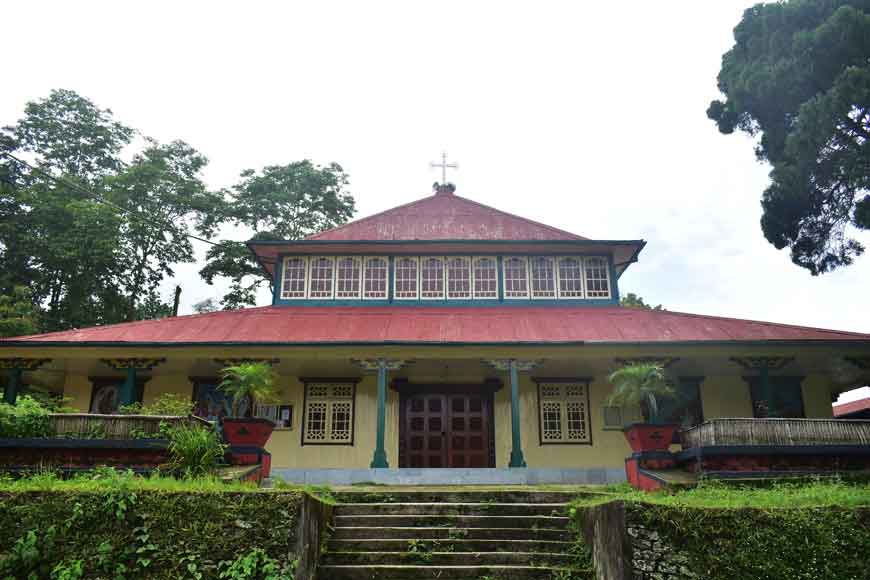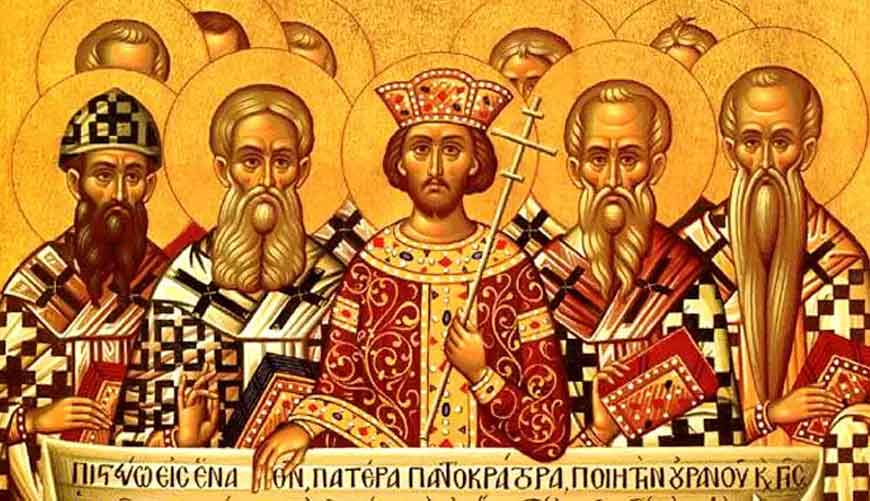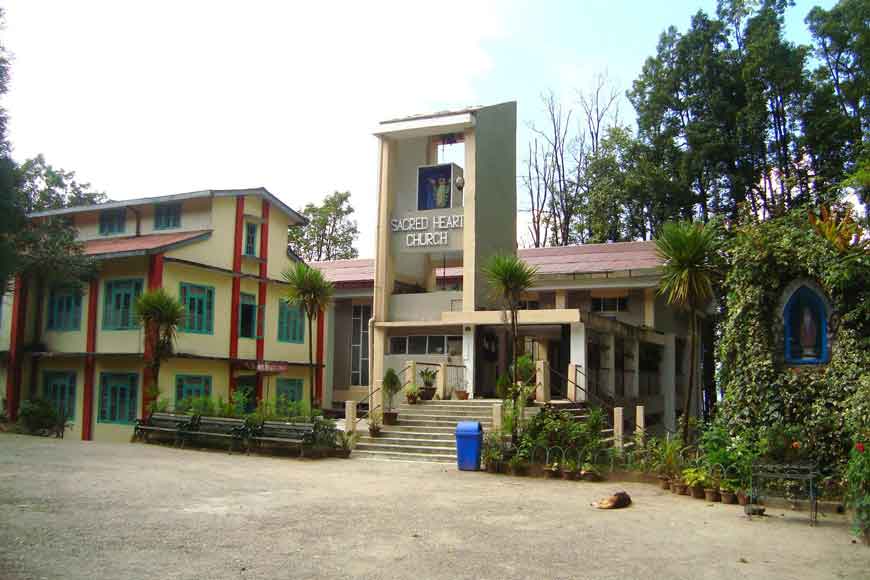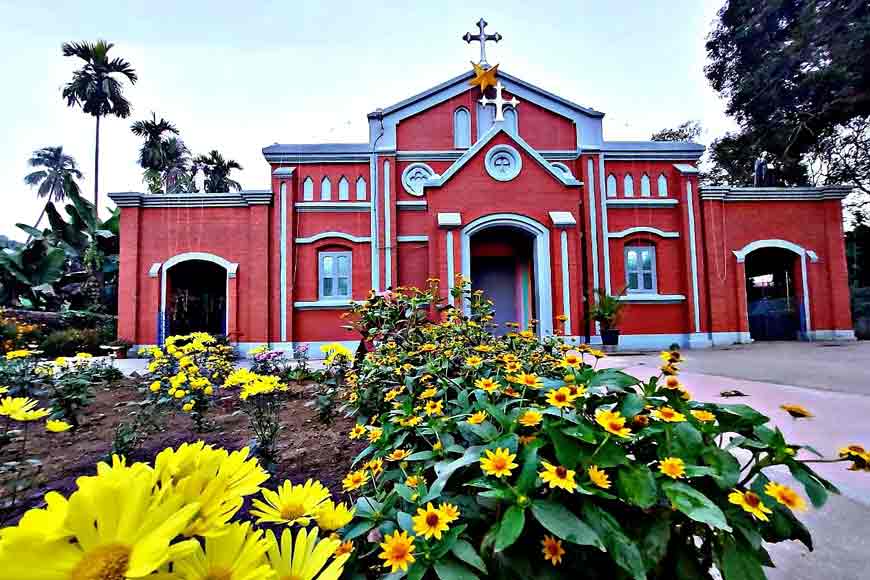Dawn of Christianity in North Bengal and influence of Tibetan craftsmen on churches

St. Theresa Church - Kalimpong
In this season of Christmas, GB goes through historical data to trace how Christianity dawned in North Bengal. Was it brought by the British? Or was it brought in by other colonial powers? In this 5-part series, we shall highlight well-known and little-known churches built in various districts of North Bengal in the 18th and 19th centuries
Part 4: How Tibetan craftsmen were roped in to build churches of North Bengal
If you have ever been to the St. Theresa Church located in Kalimpong, one will be astonished to see the influence of Tibetan art on the church architecture. This church was built by the locals and Tibetan craftsmen and showcases an amazing amalgamation of the Gothic and Tibetan style of architecture with unique wooden cravings and exquisite Biblical illustrations on the inner walls of the church. It is located amidst the lofty mountains covered with dense forests that entice the visitors giving a lifetime memory.
 The Roman Catholic Church
The Roman Catholic Church
Other lesser-known churches in the area include The Roman Catholic Church in Darjeeling, located near the Mall Road and it is a part of the Loretto Convent. It was established in 1864 by the Irish Loreto Sisters and is believed to be the gateway Catholic Diocese in Darjeeling. The church is also associated with St. Josephs College in Darjeeling. The church is located on a serene location showcasing the emergence of Catholics in India.
 The Sacred Heart Church of North Point
The Sacred Heart Church of North Point
Meanwhile, The Sacred Heart Church of North Point was established by Fr. Joseph Ford, a Belgian Jesuit at Singamari in Darjeeling. Before 1951, all the Baptisms of Darjeeling were organized in this church. The structure of this church is entirely different from other churches in Darjeeling and its peaceful halls are believed to be one of the best halls for prayers.
An interesting church of North Bengal is the St Peter’s Canisius Church, Gayaganga, that has its roots in the establishment of a tea garden. Fr Denis Truyen, S.J, an energetic and farsighted missionary, used to visit the Terai region between 1921-31, travelling down from St Mary’s College, Kurseong, where he taught theology. Father was transferred to Calcutta at the end of 1931, but not before he had arranged, through Gayaganga TE, to have a small chapel-school building erected at Girja Line.
 St Peter’s Canisius Church, Gayaganga
St Peter’s Canisius Church, Gayaganga
After the departure of Father Truyen from St Mary’s, Father Fischer took over the Terai touring program for one year in 1932. In January 1933, Fr August Bossaers, S.J, the founder of the mission, arrived in Gayaganga Tea Estate where Mr Alex Robertson, the manager, offered Father the use of the Assistant Manager’s bungalow as his residence and chapel. By November 1934, Father moved over from the tea garden bungalow to “a queer building” in Gayaganga.
In 1938, Archbishop Perier, S.J. blessed the church building and named it St Peter Canisius. Father Bossaers died of black water fever (kala-azar) in 1945. In 1947, the Jesuits of Canada were invited to help their Belgian Jesuit brothers in the work of North Bengal. The first Canadian Jesuit parish priest to be assigned to Gayaganga and to the Terai was Father Vincent Curmi, S.J. In 1963 Fr Joseph Brennan became parish priest, to replace Father Curmi who was posted to Darjeeling. Father Charles Durt, S.J. from Ranchi took over as parish priest from Father German in January 1970, and handed over to his successor Father Philip Xalxo, S.J. in January 1979.
To be continued
(Source: Encyclopaedia of Seventh Day Adventists
Darjeeling Jesuits site)









